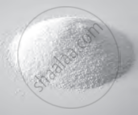Sodium chloride, commonly known as table salt, is an ionic compound with the chemical formula NaCl, consisting of sodium and chlorine ions in a 1:1 ratio. Sodium chloride is formed by a neutralisation reaction between sodium hydroxide and hydrochloric acid. We have already seen that this is a neutral salt and that the pH value of its aqueous solution is 7. It appears as a transparent or translucent, brittle, and hygroscopic mineral called halite. In its edible form, it is widely used as a seasoning and food preservative. Beyond its culinary uses, sodium chloride plays a significant role in various industries as a source of sodium and chlorine for chemical production. Additionally, it is extensively used for deicing roads during freezing weather conditions.

NaCl
